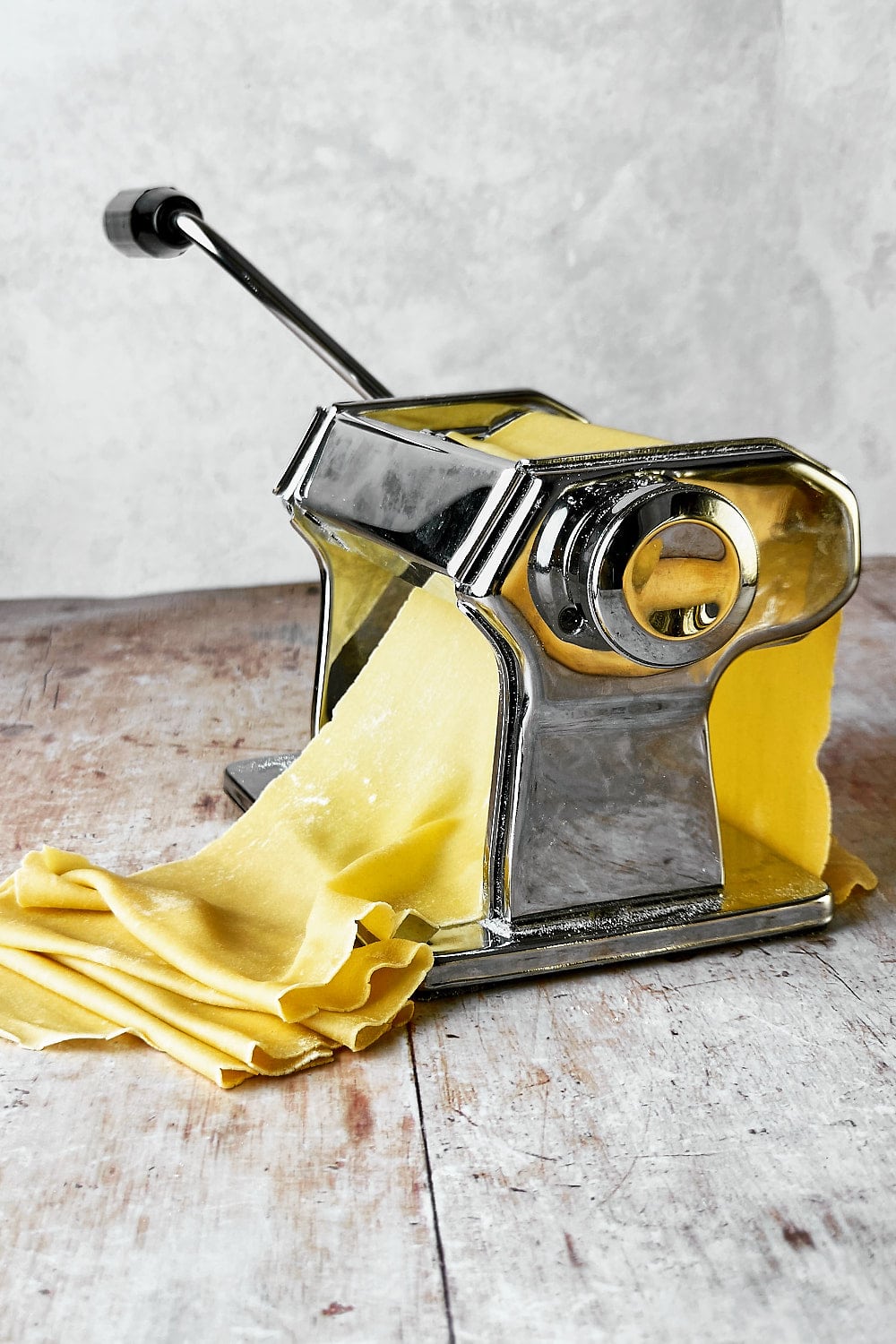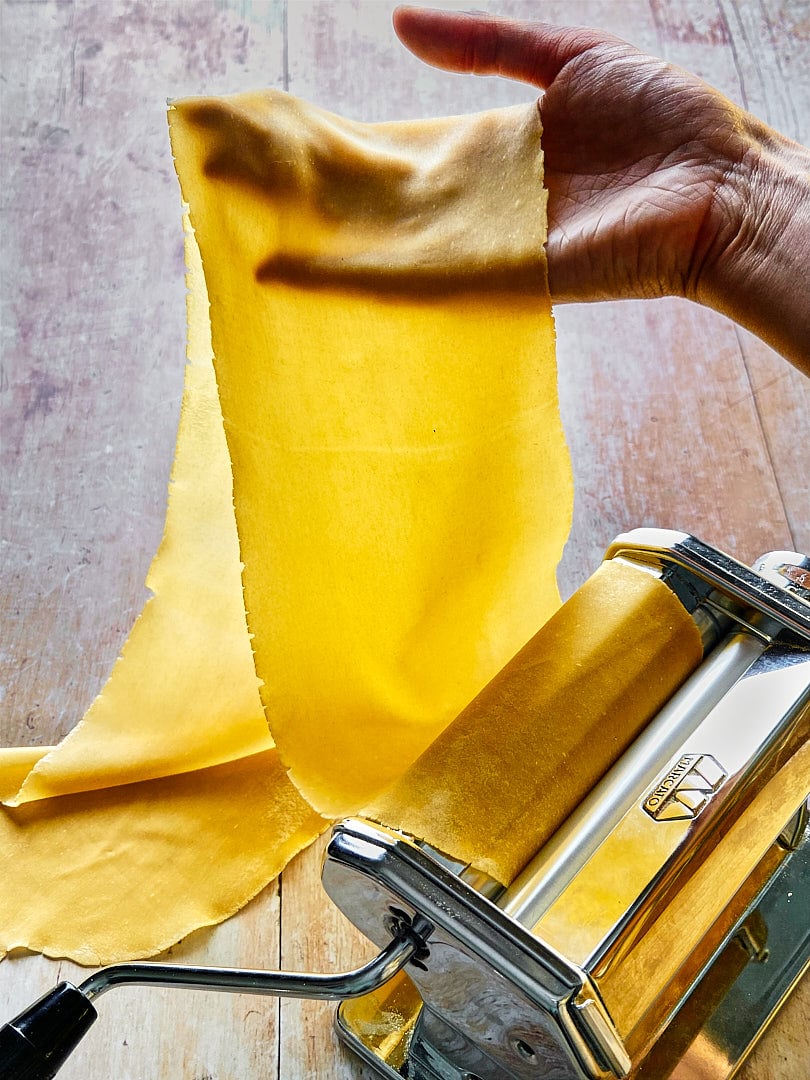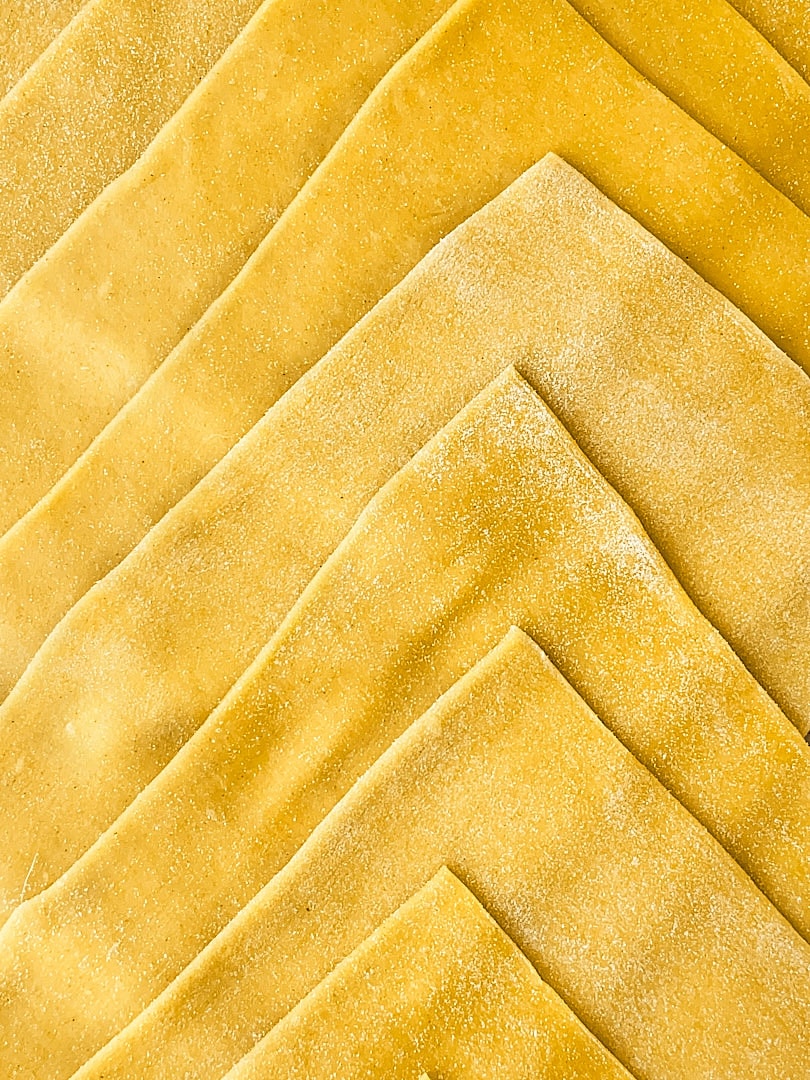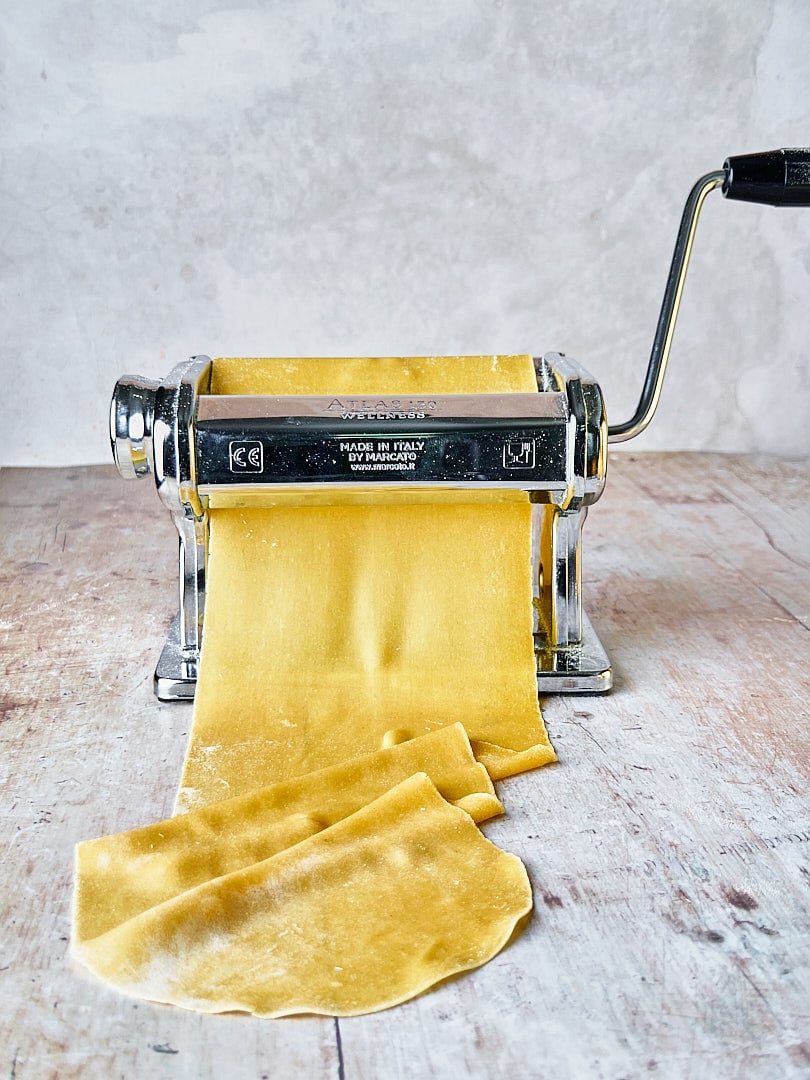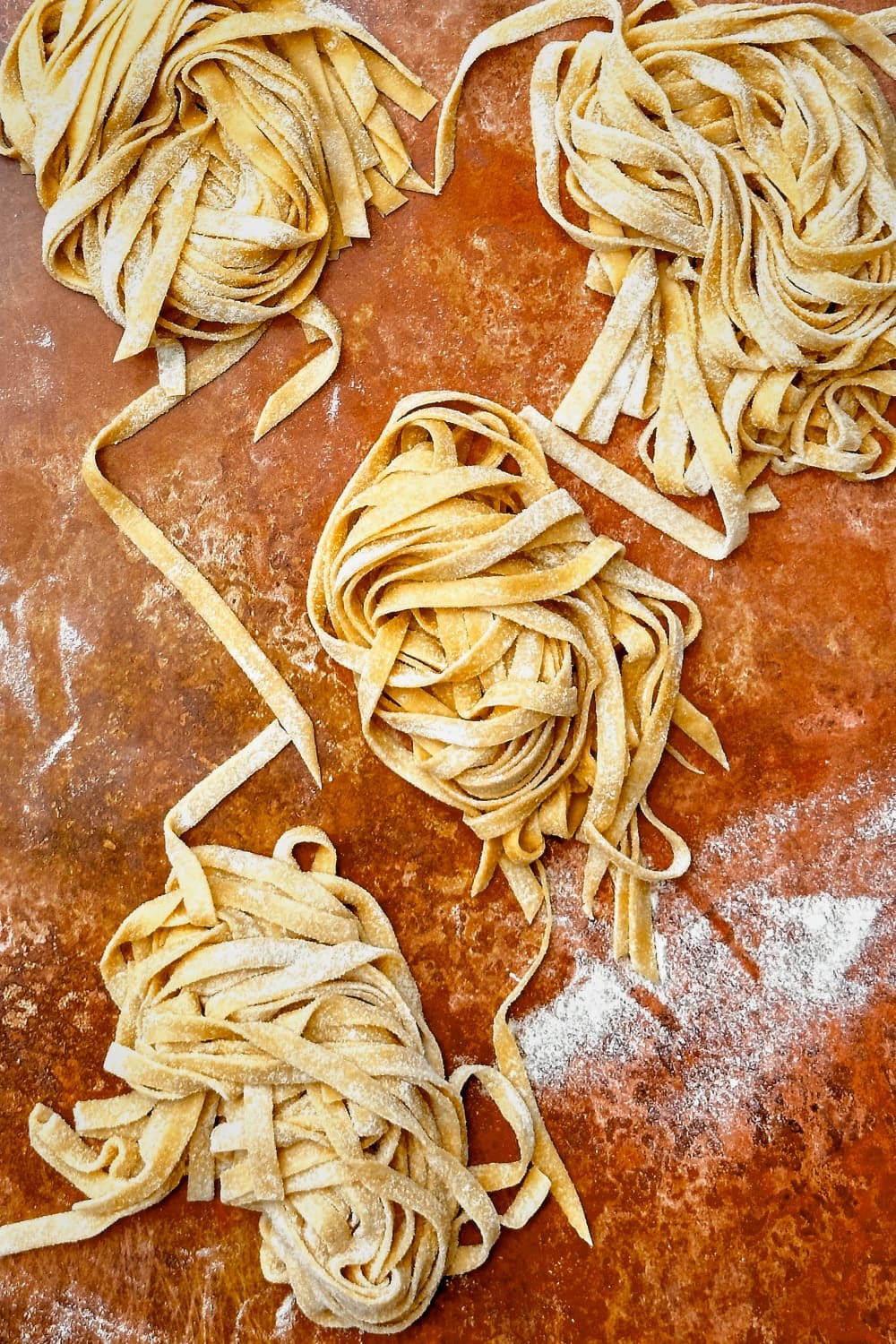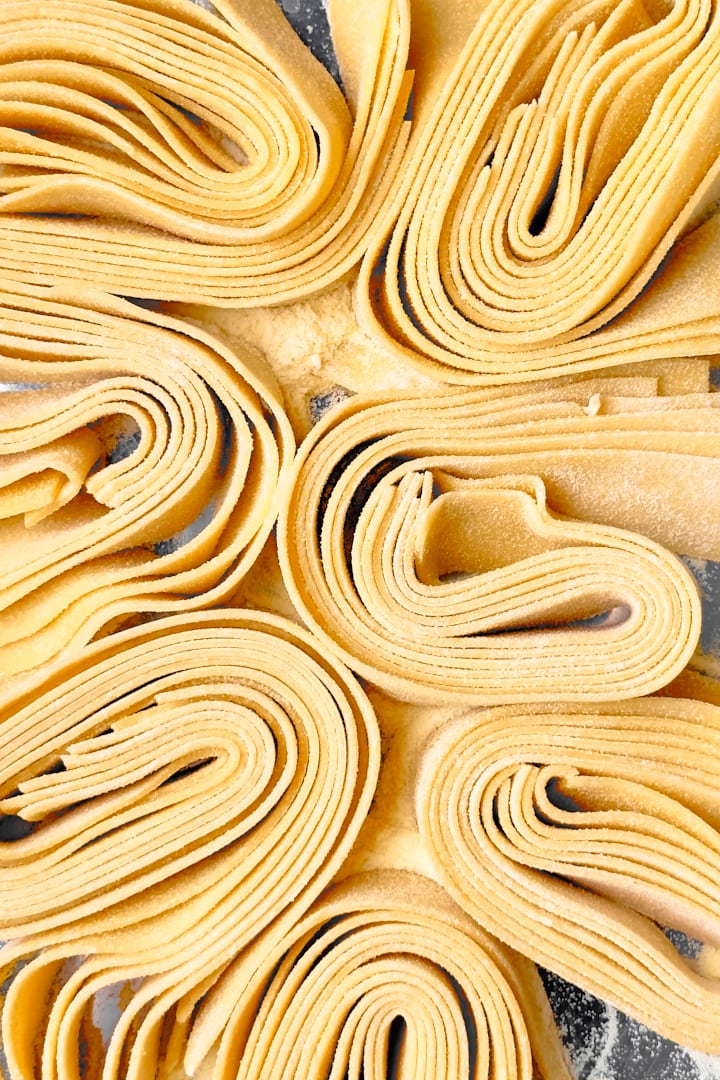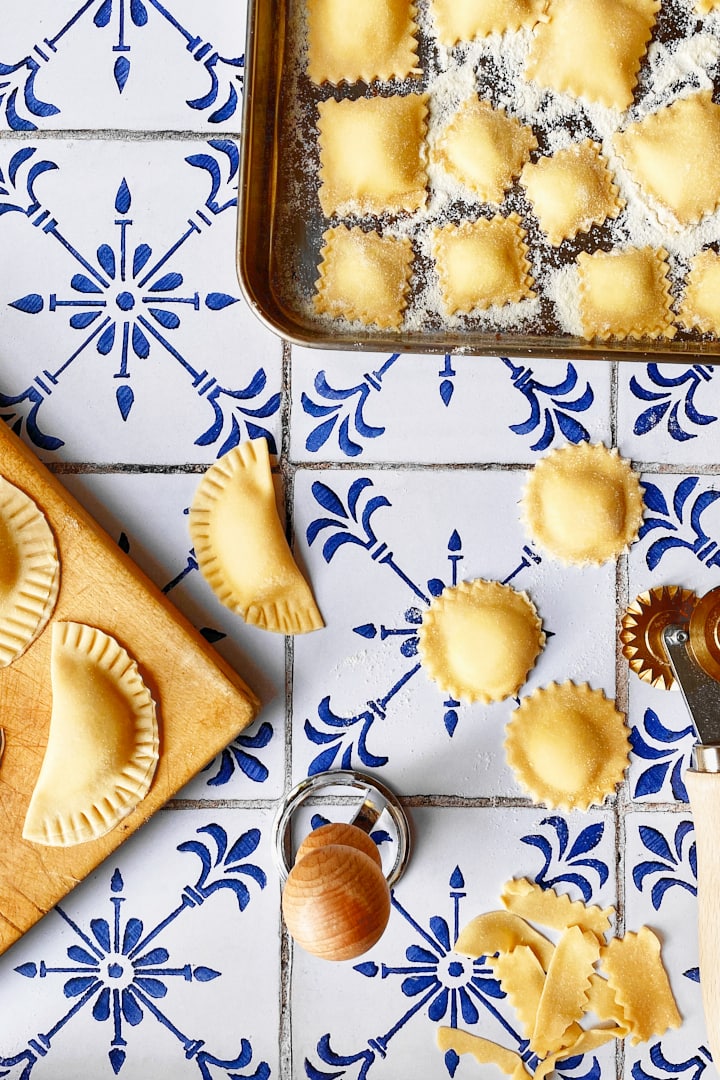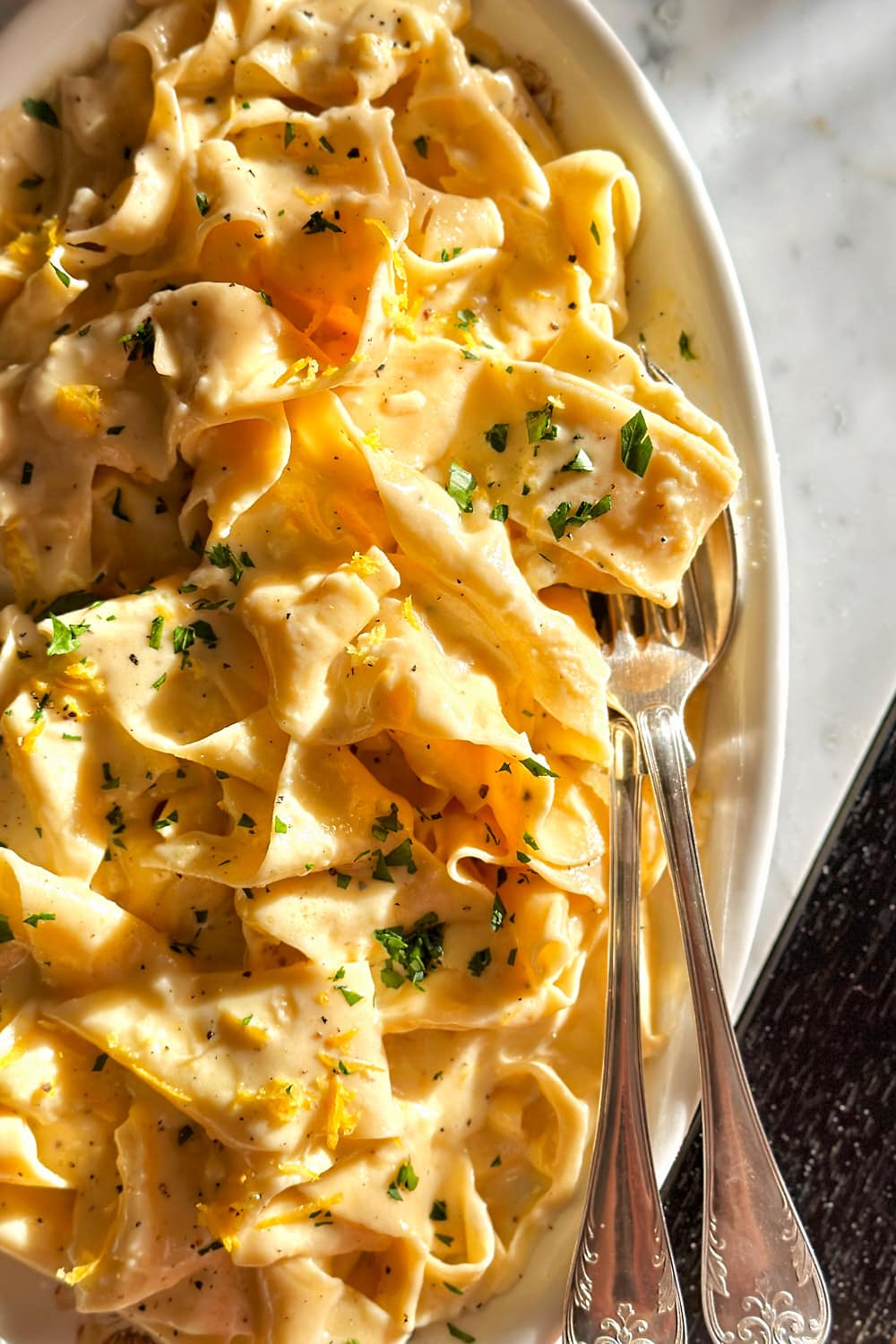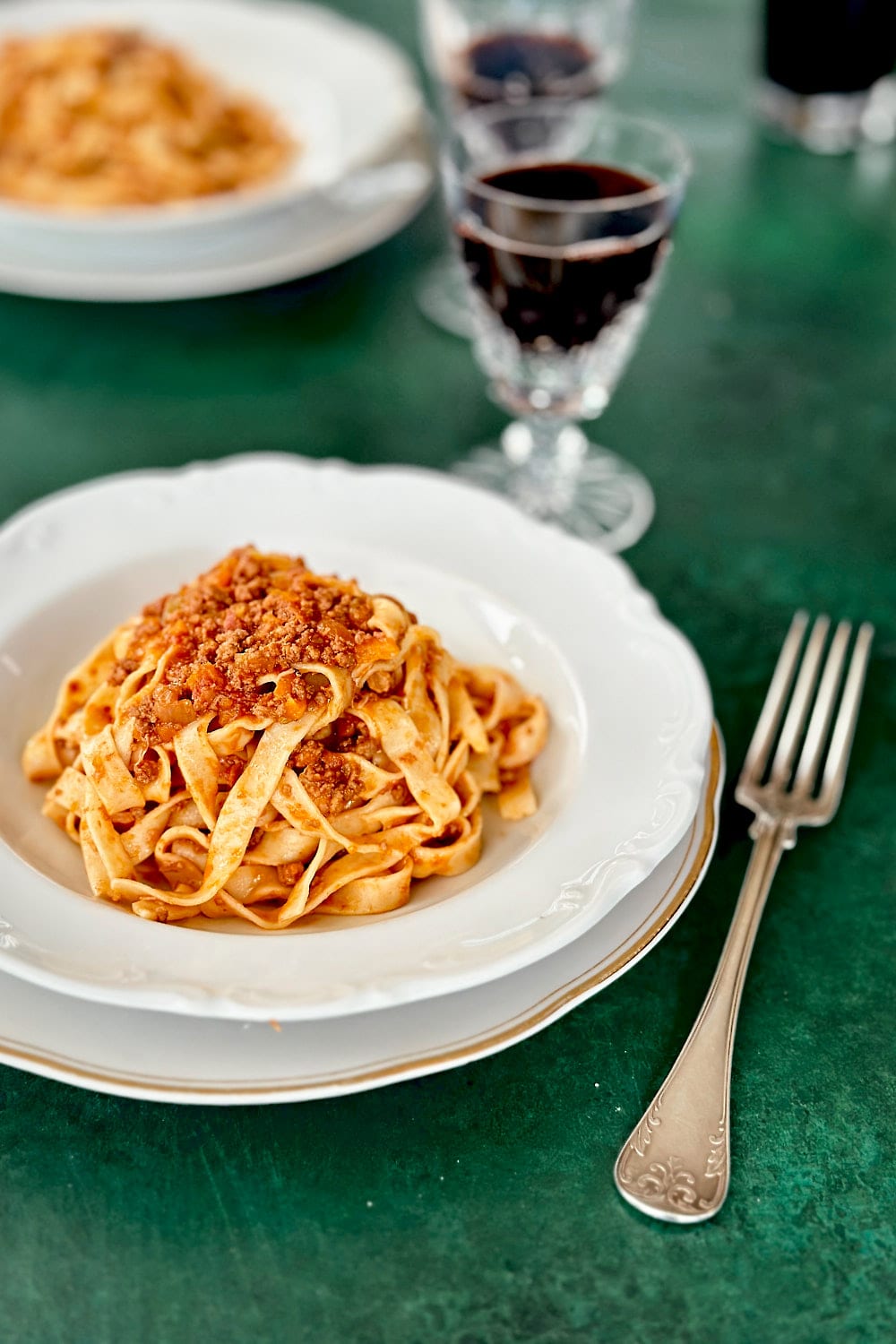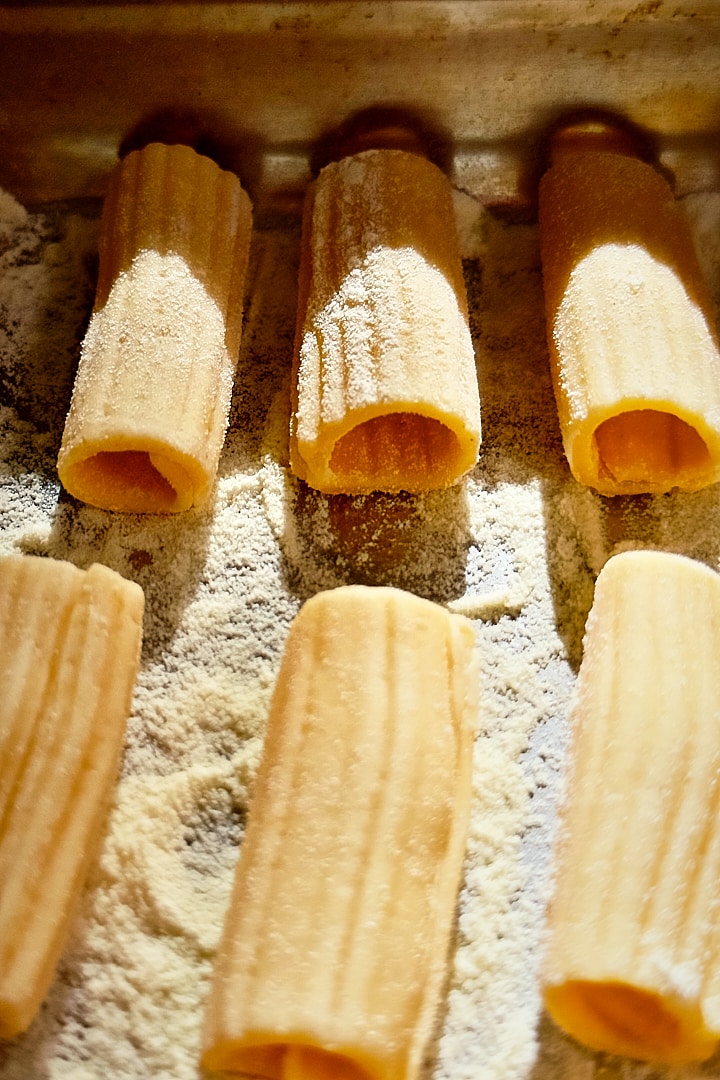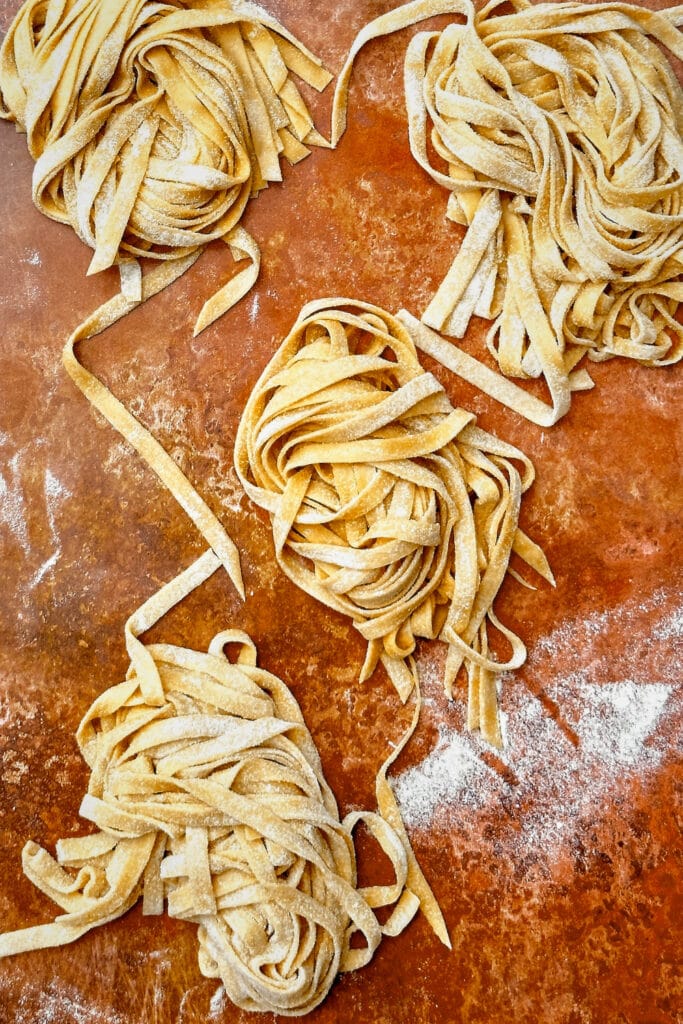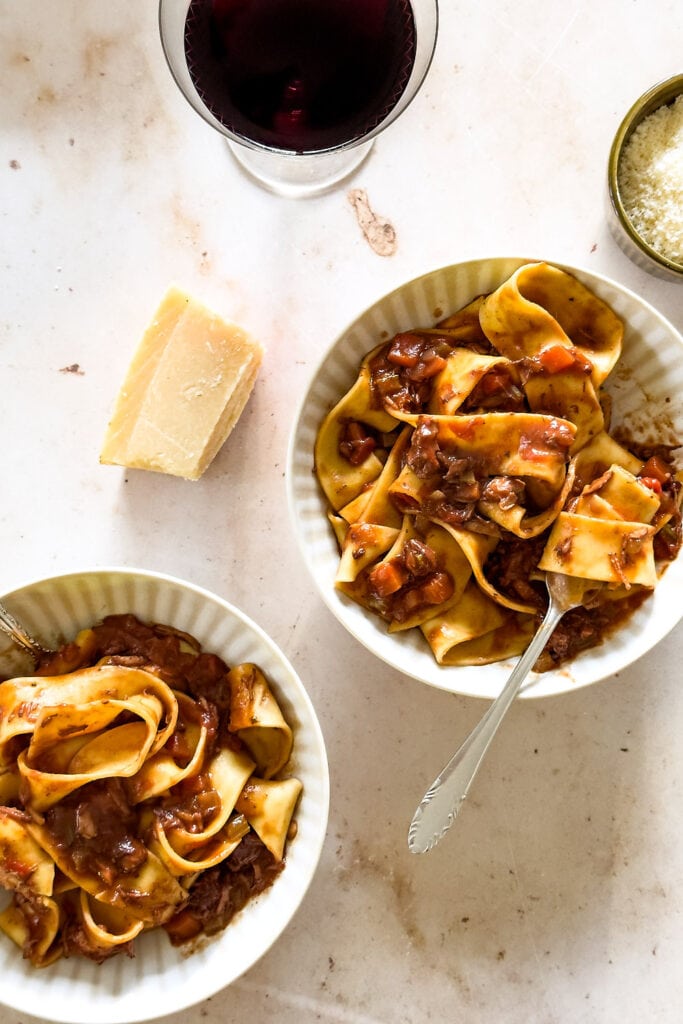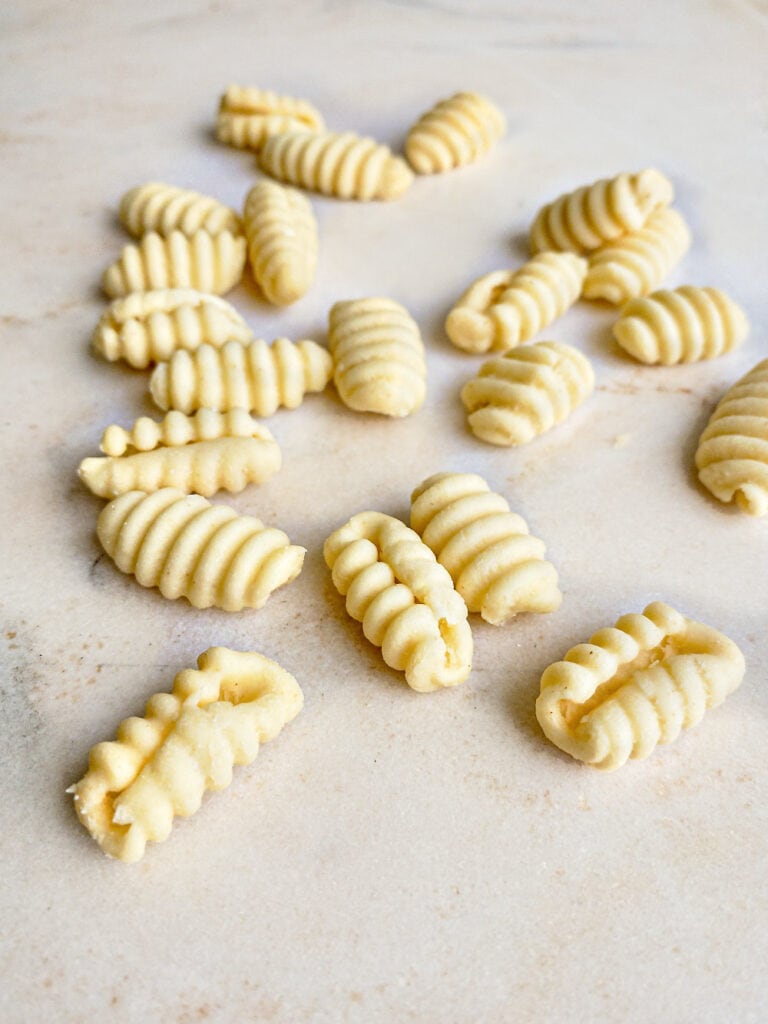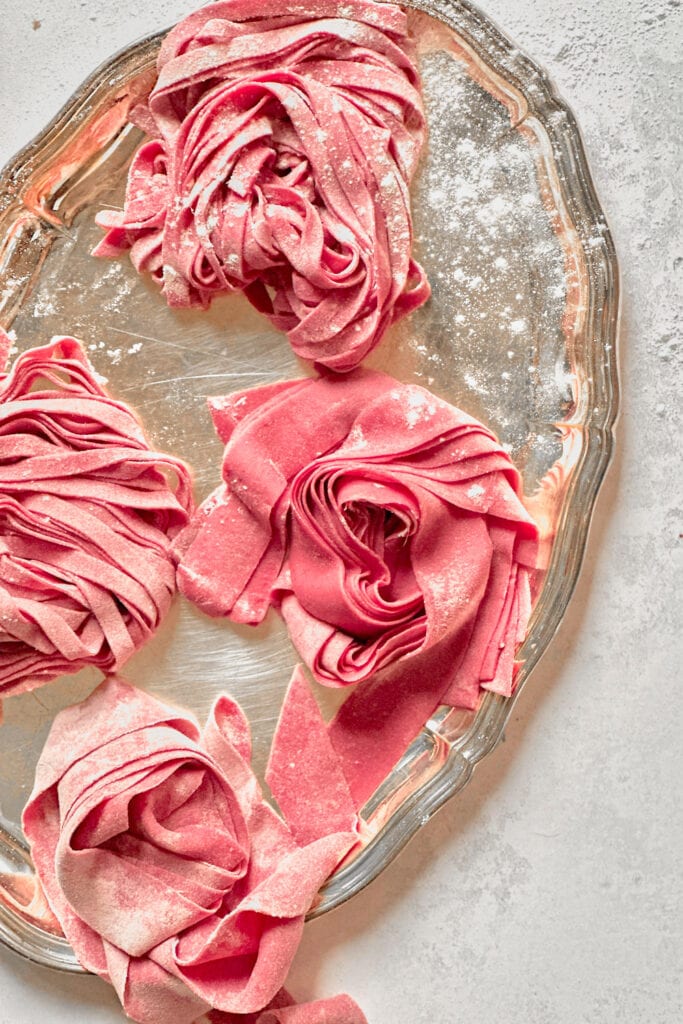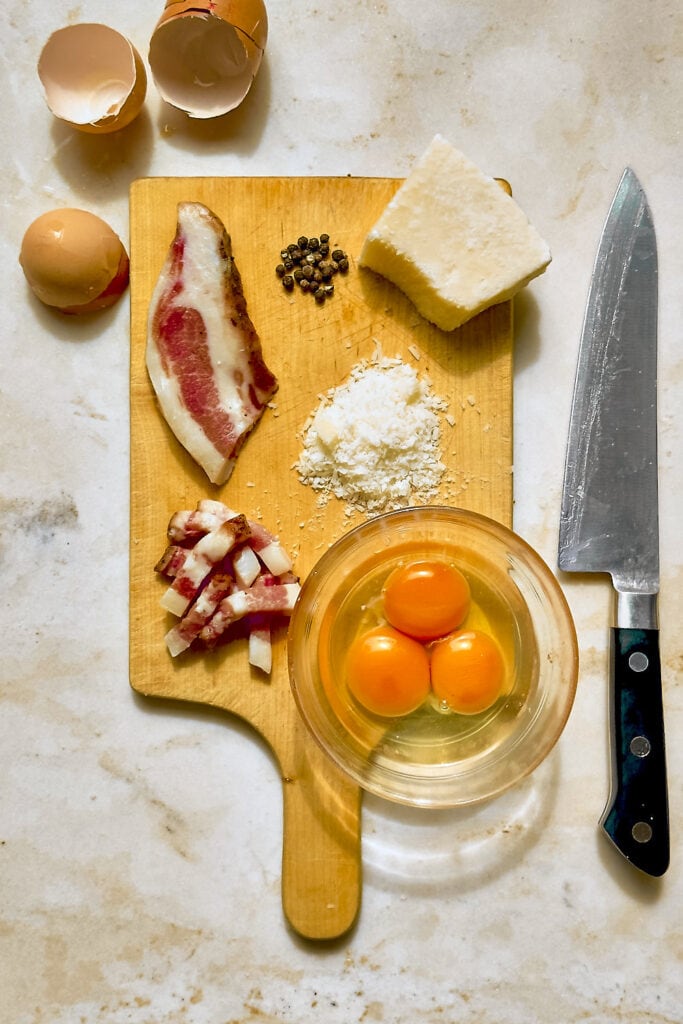How to Roll Out Fresh Pasta Sheets for Lasagne
Nothing beats fresh homemade Lasagne al forno entirely made from scratch. Make a batch of Italian Pasta dough and roll it out into silky pasta sheets to layer with ragù and creamy béchamel sauce for a delicious and comforting meal.
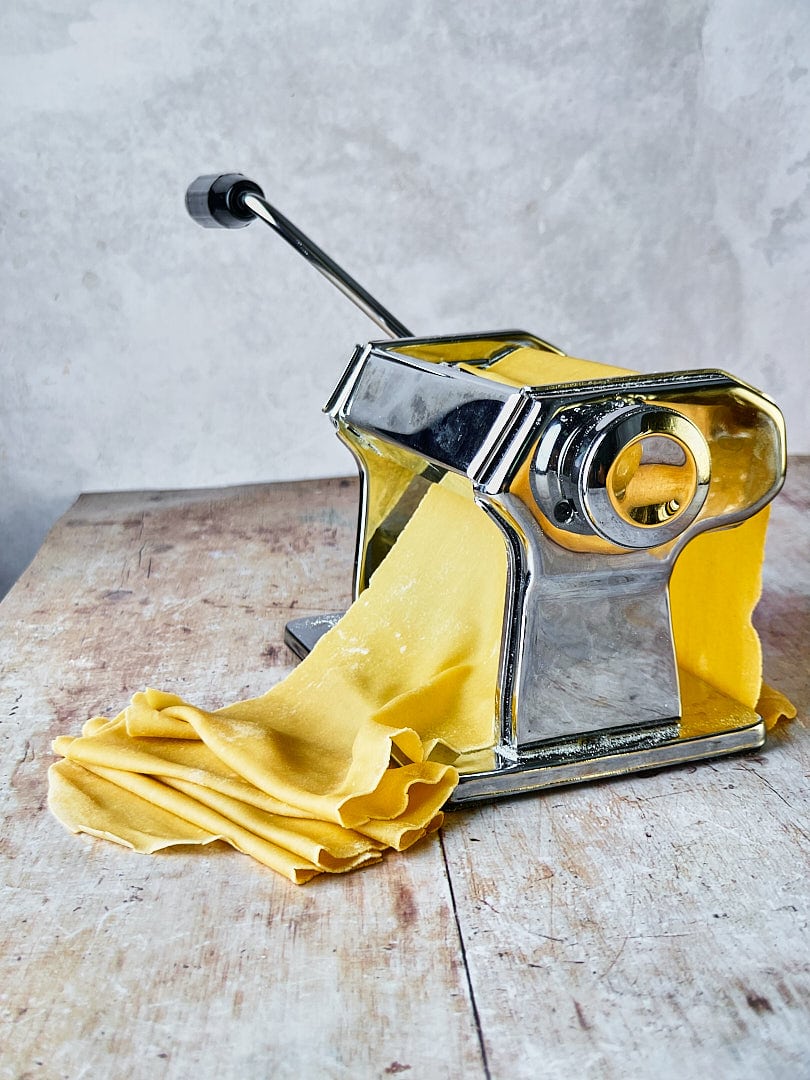
Ingredients and Tools You’ll Need
For this recipe, you will need a pasta machine (or a KitchenAid pasta rollter attachment) and a batch of fresh homemade pasta dough.
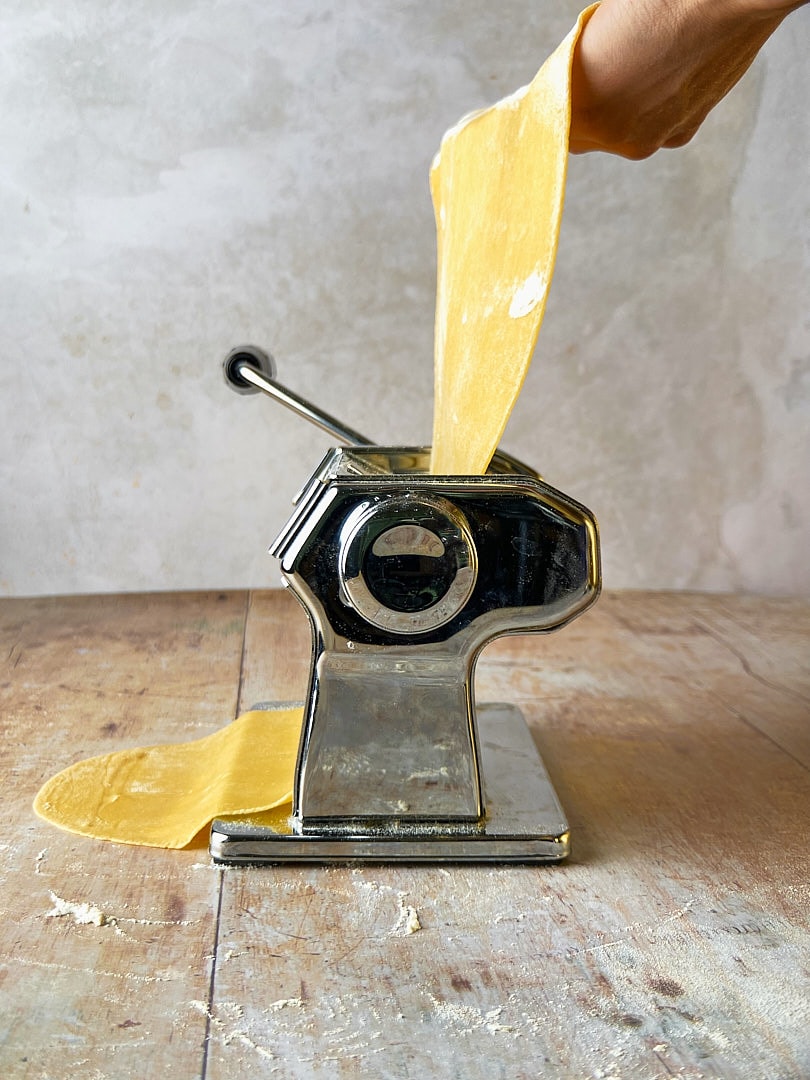
Step-by-Step Instructions
Step 1
Prepare a batch of fresh homemade pasta dough. Cut off a quarter of the dough and keep the remaining dough wrapped in cling film to prevent it from drying out.
Step 2
Flatten the piece of dough with the heel of your hand or use a rolling pin and roll it to a thickness that fits through the widest setting of your pasta machine.
Step 3
Pass the dough through the widest setting of your machine. Fold the dough in half and run it through the machine again. Repeat 3-5 times. The goal here is to get a piece of dough with the same width as your pasta machine.
Step 4
Turn the dial on your machine to the next setting and pass the dough through again. Repeat until you are at setting 5. If at any stage the dough feels a bit sticky, lightly dust it with semolina flour and continue. For homemade lasagna sheets, it’s important to not roll out the dough too thin. Aim for a thickness of about 2 mm. The dough should be thick enough to hold up the sauces and give your Lasagna sufficient structure. When you have reached the final setting, pass the dough through twice.
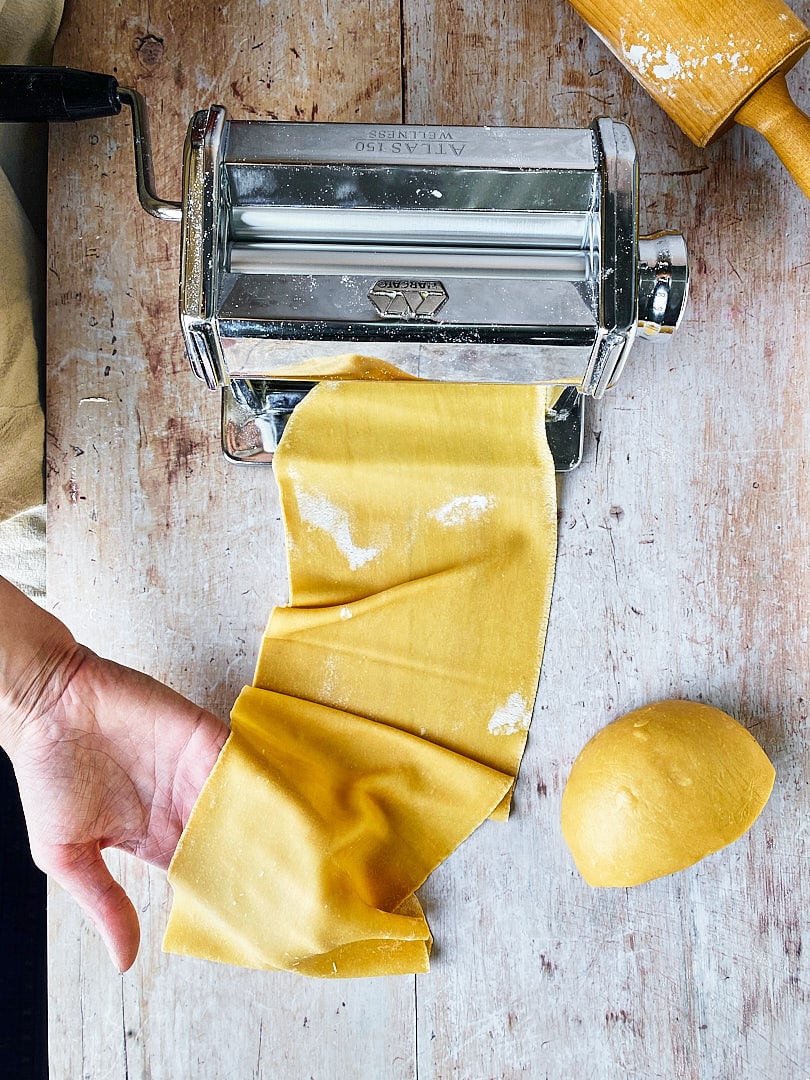
Step 5
Cover the base of a baking tray with semolina flour. Then, cut the pasta sheet into rectangles that fit the size of your baking dish (e.g., 4 sheets per layer). Also, lightly dust both sides of the sheets with semolina flour to prevent sticking. Lay the sheets on your tray and repeat with the remaining dough.
Step 6
Time to assemble your Lasagna! Cover the base of your baking dish with a thin layer of ragù. Next, add your first layer of pasta sheets, followed by a layer of ragù and béchamel sauce. Continue layering in this order and finish with a layer of béchamel sauce topped with grated parmesan cheese.
Common Questions About Fresh Lasagna Sheets
More Pasta Recipes You May Like:
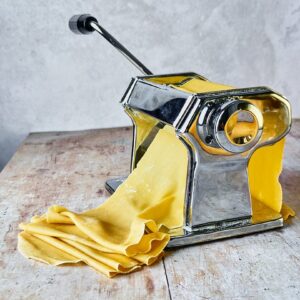
How to make fresh pasta sheets for lasagne
Equipment
- Pasta machine or pasta roller attachment for KitchenAid – e.g. Marcato Atlas 150
- Rolling Pin – optional, but recommended to flatten the pasta dough before rolling it through the machine
- Fine semolina flour – to lightly dust the pasta and prevent sticking
- Bench scraper or sharp knife – to cut the dough into smaller pieces and to cut the rolled out pasta into the desired size
- Cling film – to wrap the remaining dough and prevent it from drying out
- Baking tray – to store your pasta until ready to be used
Ingredients
One batch fresh egg-pasta dough
- 400 g Flour – "Tipo 00" or All-purpose
- 228 g Eggs – about 4 medium eggs
Instructions
- Prepare a batch of homemade egg-pasta dough. Cut off one quarter of the dough and wrap the remaining dough in cling film to prevent it from drying out.
- Flatten the piece of dough with the heel of your hand, or use a rolling pin to roll it to a thickness that fits through the widest setting of your pasta machine.
- Set the dial on your pasta machine to the widest setting and pass the dough through the machine. Fold it in half and run it through the machine again. Repeat 3-5 times until the dough is the same width as your machine.
- Turn the dial to setting 1 and roll the dough through again. Pass it through the next thinner setting and repeat until you are at setting 5. If at any stage the dough feels a bit sticky, lightly dust it with semolina flour and continue.
- For homemade lasagna sheets, it’s important to not roll out the dough too thin. Aim for a thickness of about 2 mm. You want the dough to be thick enough to give your lasagna sufficient structure to hold up the sauces. At the final setting, roll the dough through twice.
- Cover the base of a baking tray with semolina flour. Cut the pasta sheet into rectangles that fit the size of your baking dish. Lay the sheets on your tray and cover with a kitchen towel. Repeat with the remaining dough.

